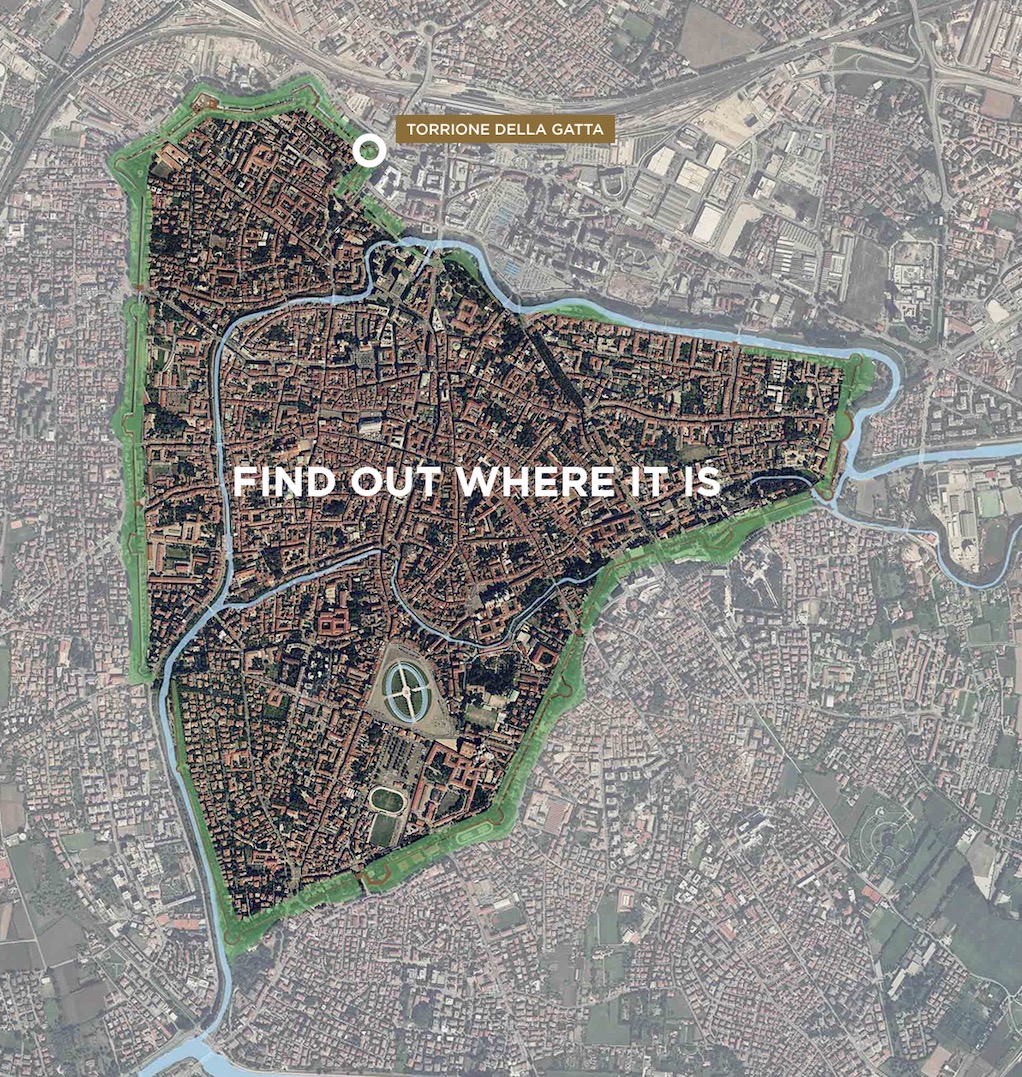The bastion
The name by which the Codalunga bastion is better known celebrates the involuntary heroine of the 1509 siege, the cat ("gatta" means a female cat) exposed by the defenders from the ramparts, as a provocative gesture towards the besiegers.
Actually the bastion that withstood the siege was a provisional earthwork, hurriedly built in the imminence of the siege outside the medieval walls, which extended further north, forming a sort of long tail (Coalonga, which means exactly that in local vernacular) to protect the Trinità suburb. The bastion we see today was one of the first to be built in masonry, following the project of captain general Bartolomeo d’Alviano, in 1513, when the hostilities came to an end.
The bastion was built to protect the nearby Porta Codalunga and to watch over the road from the north, from the territories of the Empire.
Along the road, today viale Codalunga, a monument in dark stone protruding from the bastion wall commemorates the heroic cat that gave her name to the bastion.
The bastion was at some point the site of a shooting range and later, at the turn of the nineteenth century, of a theater and beer garden. During WW1, as it was the case with several other bastions, its casemates were unfortunately used as an air-raid shelter: on 11 November 1916 a bomb killed 93 civilians, including entire families who lived in the neighborhood. In memory of the massacre, the water tower that was built in 1925 on the bastion was shaped as a shrine and a memorial chapel was created at its base, which now hosts the Mura Vive station.
 GALLERY
GALLERY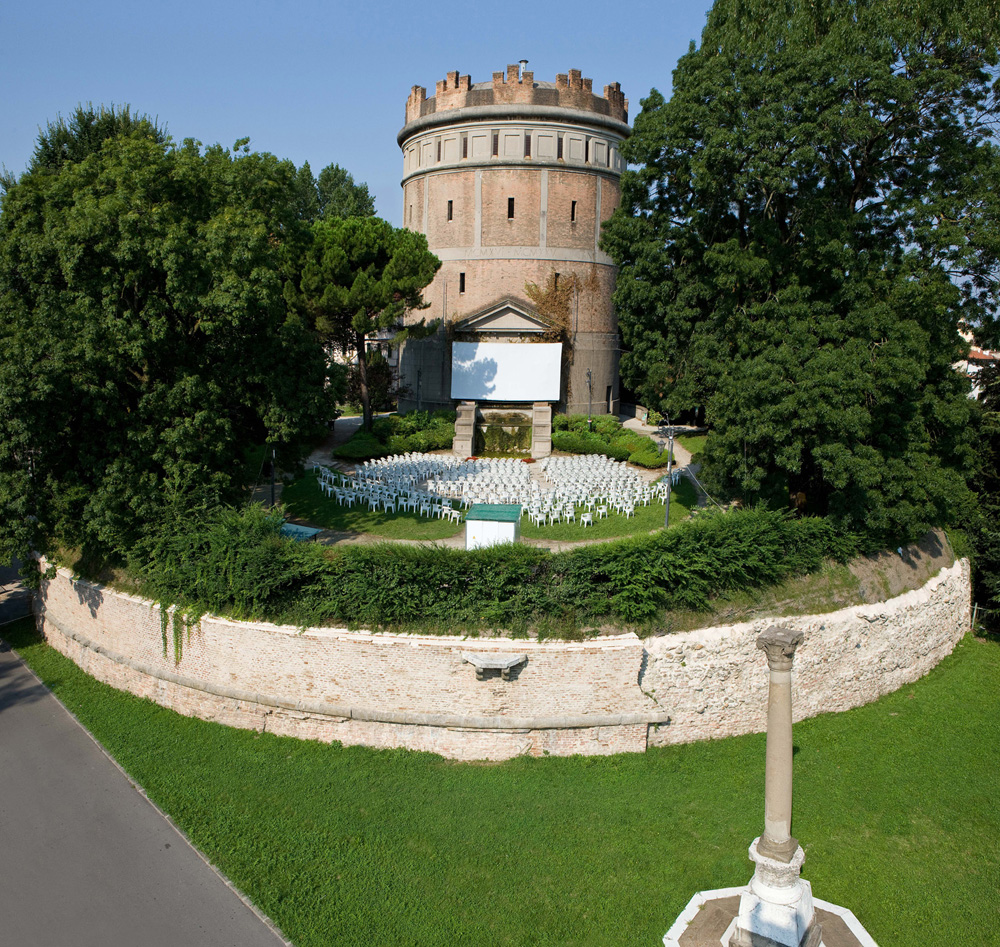
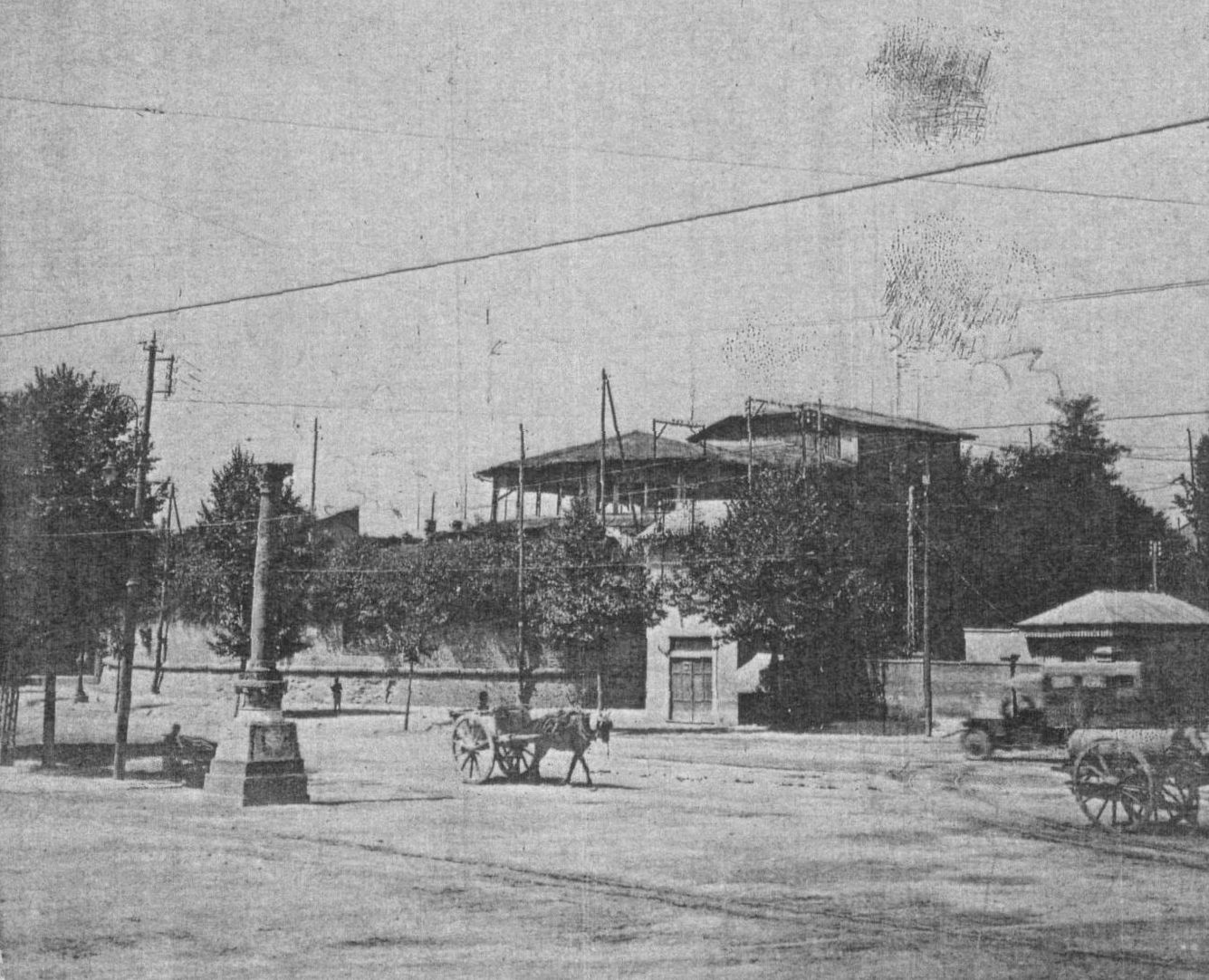
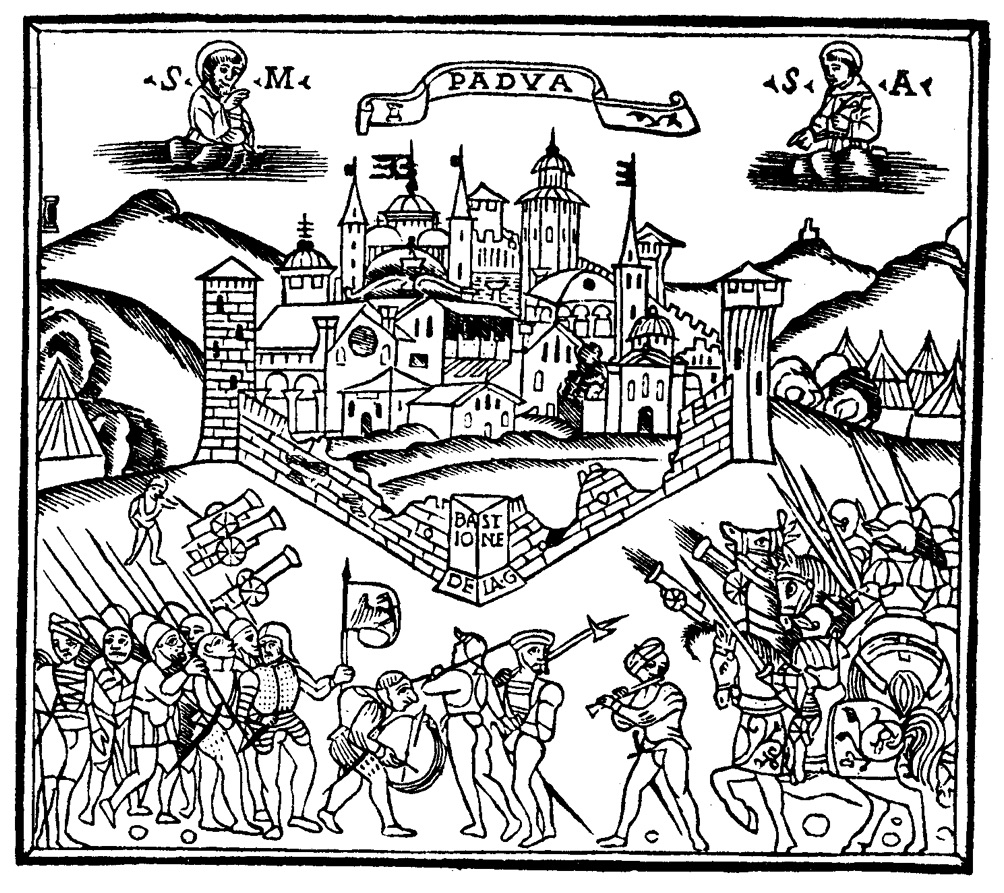
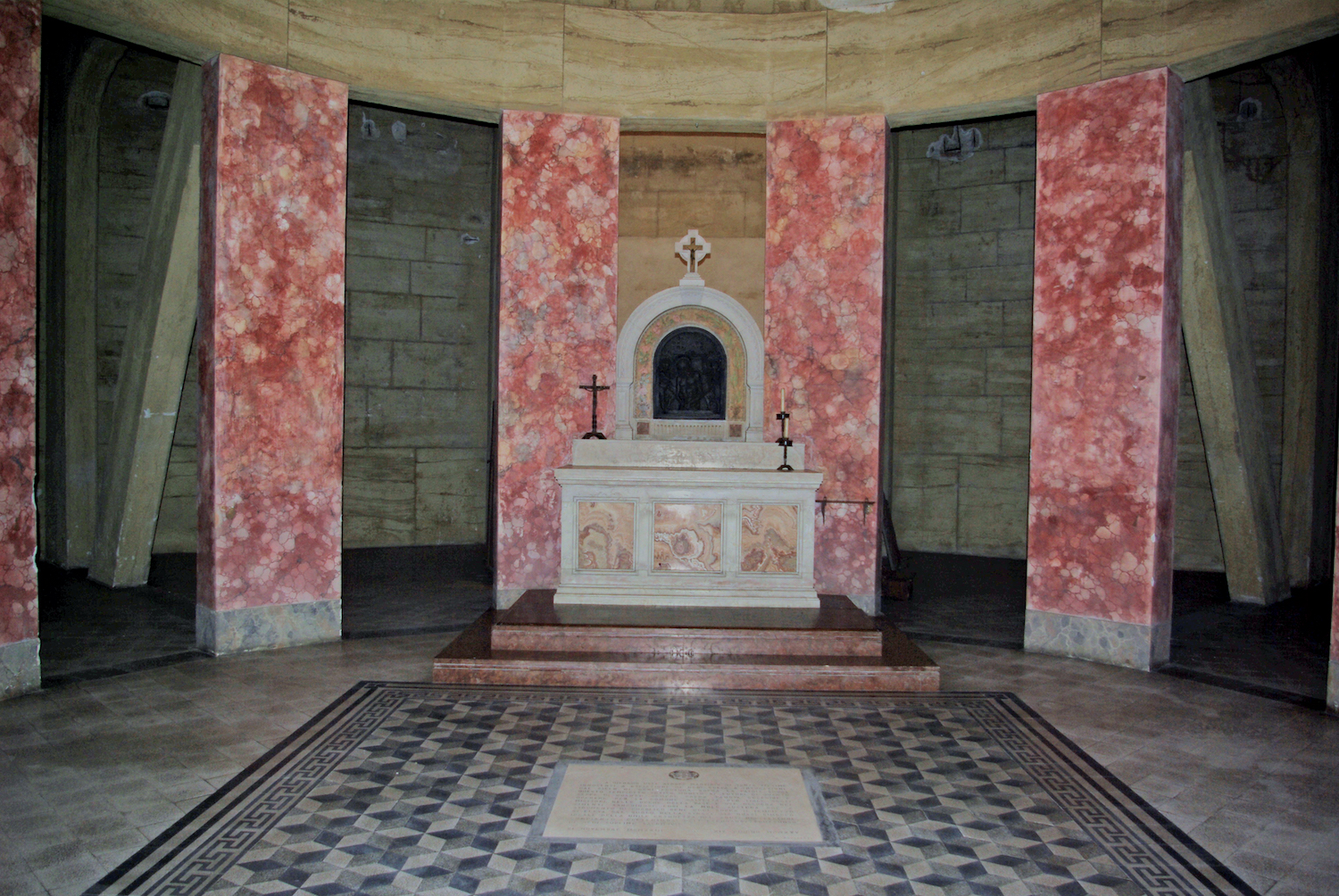
THE MURA VIVE STATION
The entrance to the Mura Vive station is at the corner of via Citolo da Perugia and viale della Rotonda
Reception
It is situated at the entrance of the memorial chapel.
In the reception area you will find the short introductory video to the Walls of Padua, common to every station (captioned in English).
You will also find a QR code that will let you download the contents of the MuraVive app specific to the bastion to your smartphone (the app itself is downloadable for free from your app store and comes with Italian and English texts).
VIDEO INSTALLATION
Inside the chapel, every 30 minutes, in groups of max 20 people, an audiovisual installation will tell you the history of the bastion, from the siege of 1509 to the tragic bombing of 1916, through the testimony of the protagonists, from the condottiere Citolo da Perugia to the provveditore Andrea Gritti, from the owner of the theater alla Rotonda Angelo Ferro to the director of the City Museum Andrea Moschetti. But, first and foremost, the famous Cat.
Given the unusual conformation of the chapel, the narration is projected simultaneously in different places to allow a good vision to all visitors.
Foreign visitors may use headphones provided free of charge at the reception desk, to listen to English dubbing.
Hearing impaired visitors may use dubbing in sign language (Italian only), and an Italian transcription on tablets, available free of charge at the reception desk.
Educational videos
Two short videos will tell you more details of the evolution of the bastion and the structures that have been built on it over time and about the bombing of 1916. The videos are captioned in English.
THE VISIT
You may then begin your self-guided visit using the MuraVive mobile app, which will show you and explain every detail of the chapel and the bastion, guiding you to a tour that will include the platform of the bastion, inside the Rotonda gardens, the walls along viale Codalunga, up to the outside of the bastion and the Colonna Massimiliana.
PRACTICAL INFORMATION
To be able to view the audiovisual installation inside the chapel, BOOKING IS RECOMMENDED
To find out opening days and hours and instructions for making a reservation, please check the INFORMATION page.
ACCESSIBILITY
The station is fully accessible.
Torrione della Gatta
Via Citolo da Perugia, at the corner with viale della Rotonda
